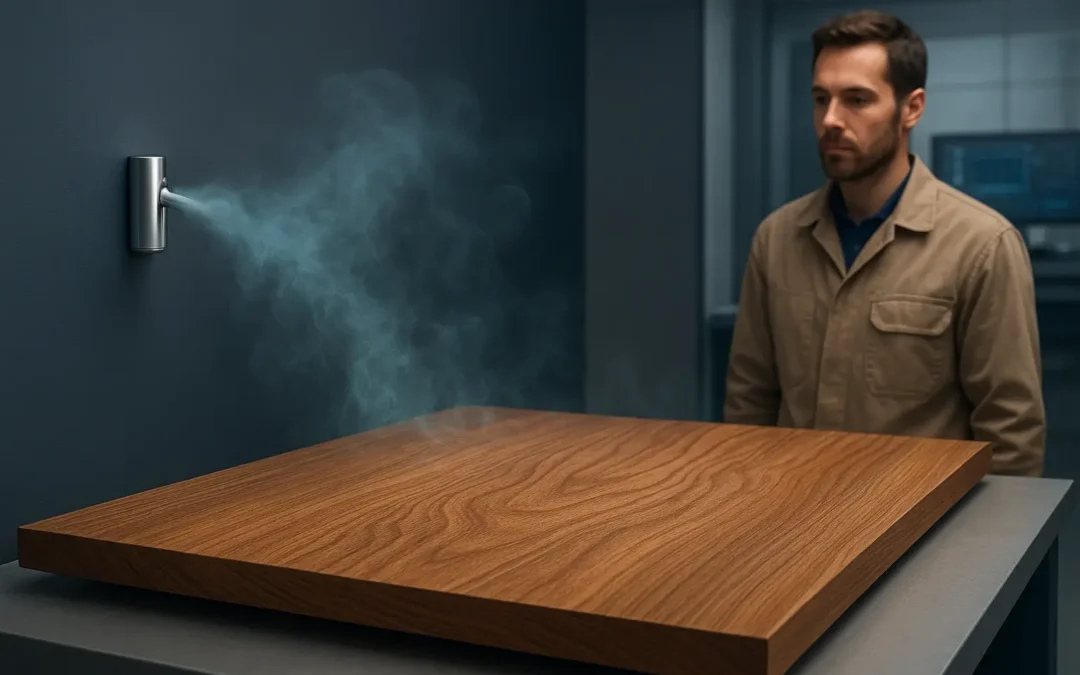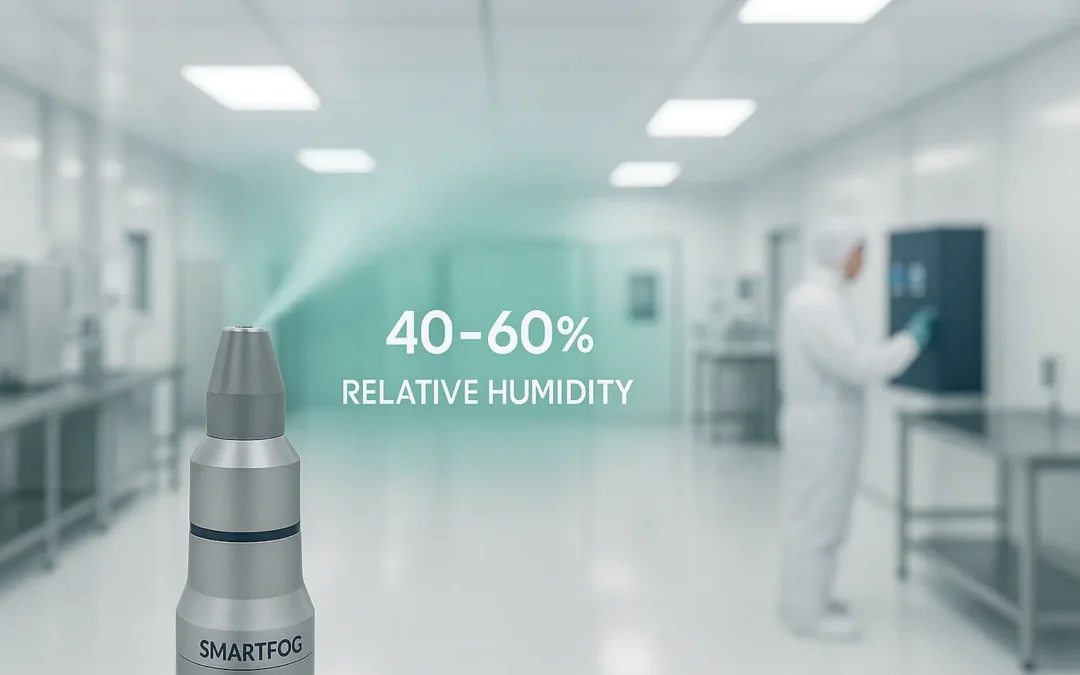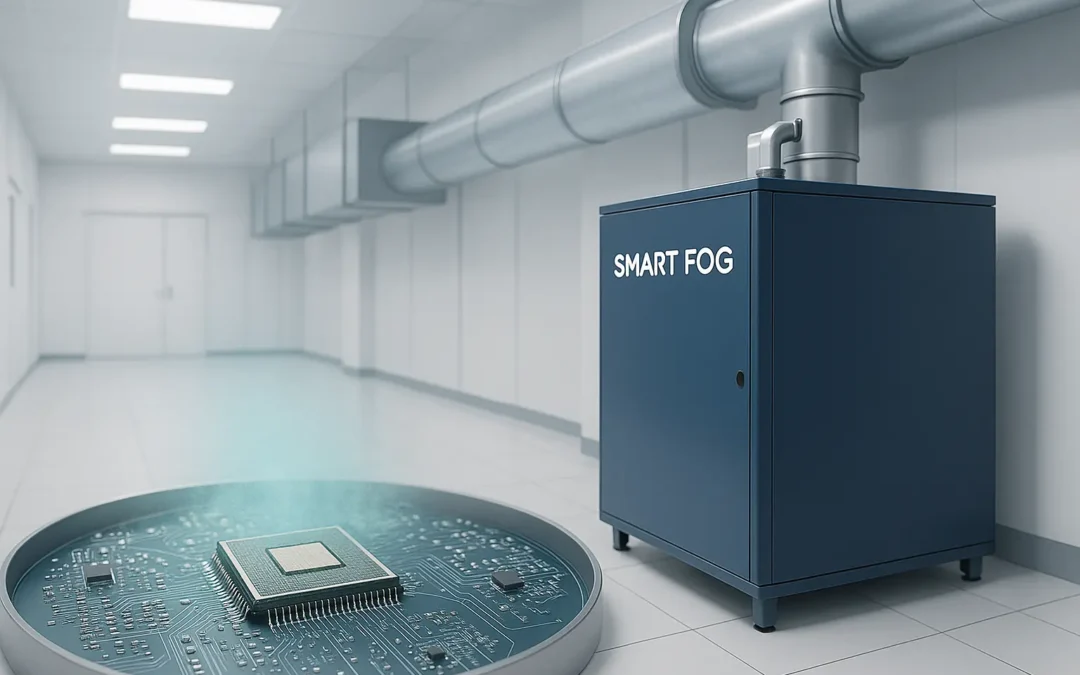Introduction – The Unseen Enemy Floating Above Your Process
Stand inside any certified cleanroom and you’re struck by how controlled it all seems. White suits. Stainless surfaces. Air changes humming from above. Digital monitors confirming temperature and pressure. It feels like you’re inside a perfectly tuned machine.
That’s precisely why airborne particle risks are so dangerous — they hide in plain sight. Your operators can’t see them, your differential pressure sensors don’t catch them, and your HVAC dashboard is blind to them. Yet these tiny invaders are behind some of the most costly and reputation-damaging failures in pharmaceutical, biotech, medical device, and electronics manufacturing.
Particles are direct carriers of bacteria and fungi. They wedge themselves into circuit etchings or delicate MEMS assemblies. They lodge in sterile fills, sticking to vial necks or migrating into caps. Even non-viable particulates are flagged by QC teams, sparking investigation protocols that slow shipments or lead to full-lot discards.
Most facilities bet everything on their HEPA filtration, trusting that enough air changes and enough square meters of filter media will keep these risks at bay. But physics tells a less reassuring story. The truth is: filters only capture what they pull in. Anything still floating in the room is free to contaminate, short out, or degrade your critical products.
This is why tight humidity control and air ionisation aren’t optional luxury upgrades — they’re essential complementary defenses that actively remove contaminants your filters never touch. They change how particles behave in the air itself, slashing the load before it ever reaches a product surface or critical environment. In this post, we’ll break down why airborne contamination is so persistent, how it slips past standard filtration, and why Smart Fog’s tight RH plus natural ionisation is the only proven way to cut risks at the source.
Why Filters Alone Can’t Keep Cleanroom Air Truly Clean
It’s easy to believe your cleanroom is secure. After all, you’ve invested heavily:
- ISO 14644-validated HEPA modules rated to capture 99.97% of particles ≥0.3 microns.
- Laminar airflow systems pumping hundreds of air changes per hour.
- Strict gowning protocols, sticky mats, air showers.
On paper, these should guarantee pristine air. But that confidence is exactly why so many operators are blindsided by subtle particle-based failures.
Why? Because most contamination never actually makes it to your filters.
Here’s what physics shows us about real cleanroom conditions:
- Sub-micron particles behave like gases. Unlike larger dust, they remain suspended due to Brownian motion, bouncing off tiny air molecules. Even high-speed laminar flows don’t reliably force them straight down — they drift, swirl, and stay aloft.
- Thermal currents defeat ideal airflow. The best-engineered vertical flows are disturbed by unexpected heat sources: LED lighting arrays, racks of powered instruments, even a group of operators standing close. This creates rising plumes that lift settled particles right back into the breathing zone.
- Your facility only monitors a few points. Typical ISO setups have a limited number of active particle counters, often mounted high or at the room edge. That means your logs could show perfect ISO Class 7 while ten feet away — directly above a sterile fill line or wafer stepper — micro-zones breach thresholds with no alarms.
A study from the International Journal of Cleanroom Technology found that over 80% of particles that eventually settled inside tested cleanrooms never reached intake filters first. They simply drifted, got caught in micro-vortices from door openings or operator motion, and landed wherever gravity finally won out.
Meanwhile, typical GMP records only capture aggregate trends, not local “hot zones.” So your environmental documentation stays clean — right up until QA pulls a particle out of a sterile sample or final burn-in tests reveal circuit failures, forcing you into costly backtracking.
The Dual Threat of Particles: Product Failures and Regulatory Trouble
The reason airborne particles are so dangerous is that they create two overlapping threats: direct product impact, and indirect regulatory risk.
Direct product impact
In pharmaceuticals and sterile fills:
- Particles act as carriers for bacteria and spores. When they settle into open vials, syringes, or ampoules, they become vectors for microbial contamination that survives final sterilization.
- Even when non-viable, they show up in final filter integrity tests or as visible contaminants, forcing lot holds and full root cause analysis. Your line might stay idle for days while records are scoured, investigations run, and samples retested.
In electronics and advanced materials:
- Particles that lodge on wafers during photolithography create critical defects. These microbridges or open lines may not show up until burn-in testing, or worse, after customer deployment — triggering warranty claims and damaging reputation.
- In high-voltage or MEMS systems, a single microscopic conductive particle can cause arcs or shorts under operational stresses.
In medical device assembly:
- Surfaces that seem visibly clean may still have micro-particles. These can interfere with adhesive bonds, disrupt polymer sealing, or later migrate under packaging stresses — resulting in weak seals or field failures.
Indirect regulatory risk
Every regulatory body — FDA, EMA, even internal buyer audits — now looks closely at your environmental controls. It’s no longer enough to show differential pressures and HVAC logs. They want evidence that your facility actively minimizes airborne contamination. A string of particulate excursions in your QC or a failed sterility test will inevitably lead auditors to your environmental monitoring data. If they see stable temps and pressure but large unexplained RH swings, or if your records only show HVAC summaries without local environmental controls, it becomes a compliance weak point.
Even worse, repeat contamination trends tie directly to your risk profile. That means more frequent inspections, deeper audits, and potentially losing preferred supplier status with key buyers — devastating if you’re contract manufacturing.
How Relative Humidity Changes Particle Behavior at the Physics Level
Most cleanroom managers think of humidity purely in terms of static control. They’ll aim to keep RH above ~40% to stop shocks on operators and packaging. But humidity does something even more fundamental: it changes how particles float.
- At low RH (<40%), particles stay dry, light, and extremely mobile. They’re easily lifted by microcurrents from machinery heat, human body warmth, or even gentle airflow disturbances from moving carts.
- Above ~50% RH, particles adsorb tiny layers of water. That slight mass increase drastically improves gravitational settling. They fall out of your active process zones faster, reducing what stays airborne long enough to reach sensitive surfaces.
Multiple studies in pharmaceutical and semiconductor cleanrooms have shown that by simply increasing RH from 35% to 50%, airborne particle counts drop by 20–30% in the critical 0.5–5μm range. That means fewer particles to land in your fills, fewer micro-defects on circuitry, and cleaner overall counts.
Smart Fog pushes this advantage further by stabilizing RH within ±2%. That prevents the common HVAC cycle problem where RH dips too low between compressor stages, letting particles re-suspend just when your processes are most vulnerable.
Stable humidity doesn’t just complement your HEPA filters — it reduces the load on them by minimizing the total particulate burden in your air, extending filter life and lowering pressure drop costs over time.
How Smart Fog’s Natural Ionisation Pulls Particles Out of Circulation
Humidity is only half the strategy. Smart Fog also harnesses the Lenard Effect, naturally generating negative air ions as micro-droplets shear through patented emitters. These ions disperse throughout your cleanroom, bonding to airborne particles and giving them a slight negative charge.
What happens next is physics in action:
- Charged particles attract one another, clumping into larger agglomerates. Instead of countless micro particles riding air streams for hours, you now have larger clusters that quickly drop out of your active process space.
- The ions also help neutralize slight surface charges. That means particles are less likely to be pulled onto vial openings, wafer surfaces, or delicate polymer layers — they simply settle harmlessly away from your most critical process points.
Unlike traditional ion bars or chemical ionizers:
- Smart Fog doesn’t require local installation or constant emitter cleaning.
- It treats the entire room volume, not just a narrow field inches from a bar.
- It’s zero-chemical and zero-ozone, protecting sensitive APIs and electronic substrates.
The combined outcome is powerful:
- Lower particle counts in your most sensitive zones.
- Fewer QA excursions and root cause headaches tied to mysterious airborne contamination.
- Cleanroom logs that show stable RH and active ion environments, building confidence with regulators and large-buyer auditors alike.
The ROI: From Fewer QA Holds to Deferred HVAC Capital Spend
Because particle-driven failures rarely stop a line outright, most cleanrooms underestimate the total financial impact. But run the numbers:
- In semiconductor lines processing tens of thousands of wafers, even a 0.2% uptick in latent defects due to contamination costs millions over a year.
- Pharma or sterile device lines see batch rejections, extended QA investigations, and potential market backorders that all trace back to subtle environmental failures.
Meanwhile, Smart Fog’s environment-level solution offloads your HVAC. With humidity stabilized and particles settling naturally, your air systems cycle less dramatically. That means:
- Longer intervals between HEPA changes.
- Lower static pressures, extending fan and compressor lifespan.
- Energy savings from reduced over-cooling or reheat needs, often trimming 10–20% off total HVAC electrical bills.
Most facilities see ROI inside 18 months — a payback driven by fewer reworks, less QA time, deferred capital maintenance, and energy savings that show up on your very next power invoice.
FAQs: What Cleanroom QA & Facilities Teams Always Ask
Q. Will Smart Fog affect my equipment with moisture?
No. Droplets are under 4.2 microns and evaporate instantly. Surfaces and sensitive instruments stay dry.
Q.Is it safe for ISO Class 5 or Grade A/B suites?
Yes. It’s validated in the strictest environments, with zero chemical residues and zero ozone (UL 2998 certified).
Q. How does it integrate with our BMS?
Smart Fog systems tie directly into your building management system, giving live trend logs that simplify your GMP records and ISO validations.
Q. Will it change my HVAC needs?
Not replace, but it dramatically reduces the load. Many facilities see extended equipment life and fewer emergency service calls.
Conclusion — Make Your Air an Asset, Not a Liability
Your cleanroom is a huge investment — millions poured into stainless finishes, HVAC redundancy, validated processes, and meticulous documentation. But all that precision is undermined if your air still carries an invisible threat.
Smart Fog fixes this at the environment level:
- Tight RH ensures particles gain mass and settle instead of floating into your products.
- Natural ionisation causes airborne contaminants to clump and drop, never reaching your most critical fills, substrates, or device seals.
- Your filters last longer, your energy bills shrink, and your compliance audits get easier.








